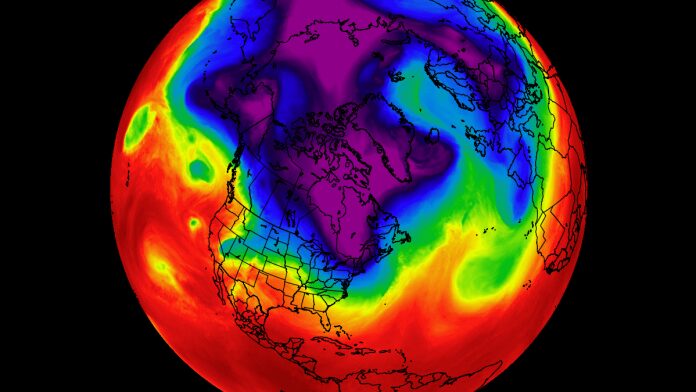
© TropicalTidbitsCold weather anomaly Europe Nov-Dec 2021.
Let's talk about global warming... Or better said GLOBAL COOLING! A brutal cold wave is currently sweeping across Europe, bringing tons of SNOW, powerful WINDS triggering widespread POWER OUTAGES and devastating several countries in Europe and Scandinavia with lows that haven't been seen since 1980 in Sweden.
Sweden has had the lowest temperature in November since 1980 with a polar wave sweeping Western Europe. Same in Ivalo, Finnish Lapland, where thermometer were at -22ºC as well as in Norway.
On the Finnmark plateau between Kautokeino and Karasjok, Sweden, temperatures dropped to -35°C on Sunday.
The forecast for next week shows a temperature anomaly for the last days of November at 10°C below the 1961-1990 reference period, reports the Swedish Institute of Meteorology and Hydrology.
Sweden's coldest spot Nikkaluokta, near Gällivare in Norrbotten, where this Sunday's low was -37.4°C, the lowest in the country in November since 1980.
The national record for November cold is -43°C for the year of 1890.
Meanwhile,
the anomalous Jet Stream over Europe during the morning hours of 29/11 led to an extreme temperature difference of 67˚C between northern Sweden and southern Greece where -36˚C and 31˚C where recorded respectively.
The cold climate even reaches the coast of the far north of Norway, where the Arctic waters are kept ice-free due to the warm sea current of the Gulf.
It was only -31.0°C at Karasjok - Markannjarga in Norway thursday. This is the fifth year since the weather station was established in 2004 that the temperature fells below -30°C in November. Lowest -35,0°C in 2010.
Further east in the Russian Arctic, about 20 ships have been trapped in thick sea-ice for several weeks Northern Sea Route and freed only recently by two strong ice-breakers.
The current freeze comes in sharp contrast to last fall, when meteorologists reported the warmest months of October and early November, averaging 6.7°C higher than normal across the Arctic. Meanwhile, snow fell over all Europe this week.
Extreme cold and snow in the UK after ArwenIn the UK, the Met Office warns that Monday's dawn could be the coldest in a decade in November.
The cold also punished the United Kingdom.
At least three people have died in the last few hours due to the Storm Arwen that came with blizzards and high winds, leaving hundreds of thousands of people without electricity.
The British weather agency put much of the country on red alert on Friday night due to the wind. Weather services advise people to travel only in case of need. Snow-covered Brun Valley Forest Park in Burnley, North West England this Sunday as the region still recovers from the effects of Storm Arwen.
"Storm Arwen" brought in gusts of 160 km/h on Friday night, before weakening and heading towards continental Europe.
Heavy snow forced the cancellation of Sunday's Premier League football match between Burnley and Tottenham Hotspur in North West England, and the heavy gale wreaked havoc on road and rail transport across the UK.
The extreme wind with hurricane force felled many trees. In Scotland, several train lines were interrupted between Edinburgh, Glasgow and other cities due to strong winds. Several roads were closed.
The sea grew huge on the coast with giant waves crashing against the rocks and coastal cliffs. About 120 trucks were "stuck by snow" on a highway in northern England, police announced.
Northern Powergrid electricity company estimates that strong winds have left some 55,000 customers in the North of England, especially in Northumberland county, without power.
Energy prices soar to recordExtreme freeze over northern Scandinavia causes energy prices to soar to a record high. The main reason is high consumption combined with ice formation on rivers with hydropower plants in northern Sweden. The northern regions of Norway and Sweden are closely linked together in the same electricity grid.
Low production in Sweden pushes prices up, also in northernmost Noway. On Sunday, a kWh came with a price-tag of 1,92 kroner/kWh (€0,19/kWh) on the spot market,
the highest cost for electricity inside the Arctic Circle since 2010. Current prices are up to 10 times higher compared to the average daily over the three first weeks of November.On Monday afternoon, spot prices that retailers use to purchase electricity from the wholesale market will climb even further to 3 kroner/kWh.
Such a price level has never been seen before in northern Norway. [
TBO,
MetSul]
I would strongly suggest that folk take more notice of what's happening and please don't be convinced by the authorities calling atmospheric events "Rare", they might once have been but are no more.